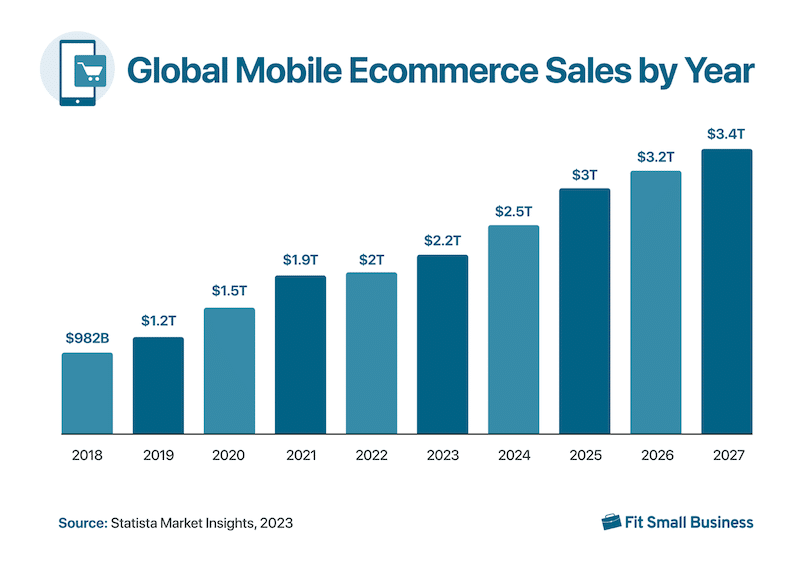The number of people buying goods via ecommerce sites has increased astronomically in the last 3 years and surprised even the most seasoned pundits and forecasters as the ecommerce sector as a whole has come of age. Nonetheless, just as bricks-and-mortar stores, online retailers are also impacted by seasonal fluctuations and trends in the market.
Ecommerce Seasonality Explained
The idea of ecommerce seasonality is straightforward to grasp. It’s about the changes in how customers buy things throughout the year. At certain times, sales are super slow, while at others, they’re so high that businesses struggle to meet the demand. Imagine this: in the chilly winter season, a store selling winter coats and boots will see a massive increase in sales compared to a sweltering summer.
But ecommerce seasonality isn’t just about the four seasons; it also includes holidays and special events like Christmas and Valentine’s Day. This pattern of buying can impact various aspects of your business, including website traffic, what customers are interested in, and how likely customers are to buy. Therefore, for ecommerce companies to stay focused on their customers, they need to grasp this seasonality and figure out the best ways to use it in their ecommerce marketing plans.
Never lose sight of the fact that ecommerce seasonality is unique and personal to each individual. Not everyone takes their holidays at the same time, although the statutory holidays are a given, they fluctuate between counties, as do when and how individuals top-and-tail their holidays according to their unique lifestyle, or taste. So they don’t directly reflect the seasonality of online consumer purchases, but they may impinge on it, in some respect.
AI delivers identified patterns in purchasing
AI now offers an opportunity for ecommerce stores to both understand and appreciate each consumer far more than ever before. Staying on the subject of holidays, for example, while some people might spend more money while on holiday – ostensibly the stay-cationers, while those travelling, are more likely to shift their spending from their domestic habits into expenditure on meals and excursions while away.
Being creatures of habit (with anyone else) doesn’t come into machine learning calculations per ce, but if previous history identifies products which denote the likelihood of an increase, or decrease in potential revenue, it can and does adjust accordingly, to ensure the maximum return is achieved from each consumer. For example, if navigation and purchase habits foretell potential scenarios, then these can be identified by AI. The individual who makes a selection of products commonly before a hiatus would be easiest to offer as an example.
If you don’t sell sun tan lotion, passport holders and flip-flops, you might believe that you’re unlikely to predict imminent time spent away from day-to-day consumerism. But you may not appreciate that patterns of action before that imminent departure can also say much the same thing. There are often product identifiers in many other verticals other than the above. The number of times a consumer looks at or buys T-shirts, shorts etc for the fashion retailer, travel size cosmetics and make-up for the beautician or cosmetics retailer etc.
We concede that often however the information but only be a nuance. but patterns can and are identified by AI, revealing that an individual’s navigation habits or change in purchase behaviour, which to the naked eye goes unseen, are now identified, captured and applied.
Hyper-personalisation of product selections offered to ecommerce consumers is now acclaimed as the biggest source of marketing ROI. Be careful though, as analysis of the leading 30 providers of hyper-personalisation illustrates considerable distinctions. This is the application of all these consumer actions, data captured by each and every visit to your site, together with the same for their actions to emails too. It culminates in building a relationship with each consumer, keeping products not only relevant but immediately pertinent to their needs perpetually throughout time.
Mobile Shopping is Becoming More Popular

Today’s shopper desires the convenience of buying products at any time and place. Thanks to mobile shopping, this is becoming easier, as it allows shoppers to visit stores, examine and test products personally, and then buy them online at a time preferable to them – not you. Therefore, to take advantage of this trend, your online retail business must have a mobile-responsive website.
The statistics for the volume of global ecommerce conducted via consumers’ mobile phones illustrate just how phenomenal the revenue from people, permanently on the move, has become. Despite this, factors influencing purchase decisions will be affected. Lying on a beach in the Balearics tends to offer opportunities to create new and different purchasing habits, that even the most experienced marketing executive, can’t stand a hope in hell of identifying. But AI can and commonly does, provided you use it. What ROI are you achieving from your tech stack?
How to Measure Ecommerce Seasonality
An ecommerce platform has many key performance indicators (KPIs) to monitor, which aid in assessing the user experience, the efficiency of the ecommerce store, and strategies for enhancement, customer contentment, marketing activities, and additional aspects. Nonetheless, several key metrics stand out as crucial when evaluating the performance of your ecommerce venture in connection with seasonal fluctuations. These are elements that your AI solution will monitor and account for within part of their autonomous effort.
Inventory Accuracy
The key performance indicators assess the precision of your software’s inventory count compared to your actual stock. If there’s a mismatch, you’ll discover whether you’re overstocked or understocked. An insufficient inventory can lead to difficulties in processing and dispatching orders for your ecommerce venture. This situation becomes particularly problematic during the busiest times for an online business.
The peak order rate indicates the number of orders that are shipped from your company’s storage facility and successfully reach the client without any problems. Implementing a warehouse management system can assist in reducing flawed orders and notify you before their distribution to the client.
As indicated by its title, this key performance indicator will determine the quantity of orders returned by your customers. This indicator is crucial in identifying problems with your company’s supply chain. A high volume of returns is a negative indicator and may point to various problems like damages, supply chain issues, reasons for returns, and delays in deliveries, and usually a reflection of the lack of implementation of a hyper-personalisation solution adept at this strategy.
Conclusion
A professional AI hyper-personalisation solution, identifying each consumer’s imminent buying propensity, delivering a unique product selection, identified by the actions transmitted by each particular consumer’s unique actions. You can’t possibly consider a consumer disloyal because they decide to take themselves away from you, but making up for potential revenue losses, while they do, might be more tricky. Two weeks in the sun isn’t grounds for a claim for abandonment!
The solution of course in have a means to identify the maximum opportunity for products to be offered to capture those returns for you in the blink of an eye. You can’t achieve this via your store, as you have to wait for each consumer to come to you. Instead, you have to take unique product selections to them, offering what is most relevant at a precise moment. For that you need hyper-personalisation.





